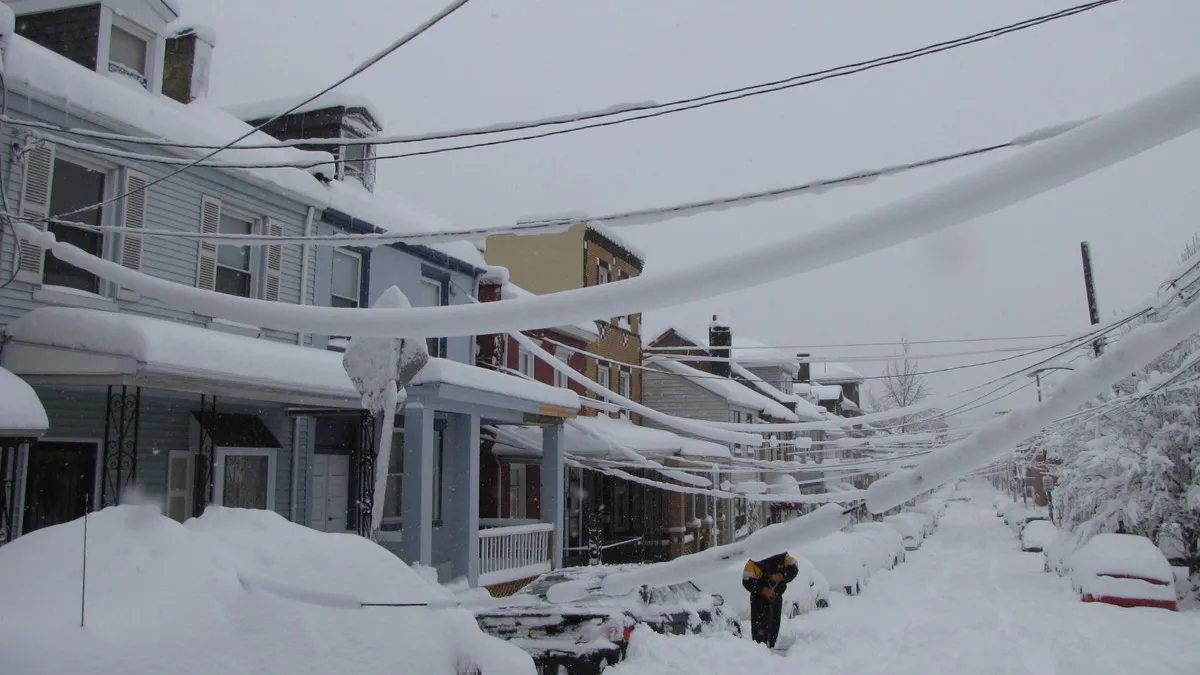Dive Brief
- The nation’s electric grid is expected to stay reliable this winter, witnesses told the Federal Energy Regulatory Commission on Thursday, undermining a key argument used to justify the Department of Energy’s cost recovery proposal for coal and nuclear plants.
- FERC staff and regional grid operators said they expect sufficient generation capacity and operating reserves to provide power throughout the winter as mild temperatures and market reforms enacted since the Polar Vortex bolster power supply security. New England and Southern California remain points of concern due to gas transport and storage constraints.
- FERC also issued a new rulemaking order on cybersecurity to protect utility systems from malware installed by mobile devices. And the commission approved a new hydropower licensing policy, extending the default license length to 40 years from 30.
Dive Insight
Federal energy regulators turned their attention toward the coming winter on Thursday, hearing presentations from staff and each RTO and ISO about expectations for the colder months.
"At this time," staff said, "we do not see major risk factors that would likely lead to significant market disruptions during this winter."
The six organized market operators under FERC jurisdiction reinforced that claim, saying even in markets like New England, where gas pipeline capacity has raised power supply concerns, they are prepared even if temperatures drop below expectations.
“The generation assets and transmission assets perform well and are accustomed to cold weather,” ISO-NE Vice President for System Operations Peter Brandien said. “We may have some delayed starts for units that haven't been on and we're bringing them on in a cold morning but we don't see forced outages due to cold weather.”
Those comments, echoed by other RTOs, run counter to the Department of Energy’s justification for its proposal to provide cost recovery for coal and nuclear plants with 90 days of fuel onsite. Secretary of Energy Rick Perry has repeatedly said the rule is necessary to protect the grid from events like the Polar Vortex, an extended cold snap that forced some generators offline in 2013-2014.
“I don’t think any of you want to stand up in front of your constituents and explain why the decision had to be between turning our lights on and keeping our family warm,” Perry warned House lawmakers at a hearing last week.
Brandien said long periods of extreme cold could still pose problems in ISO-NE, when plants “are using oil and LNG pretty hard and we don’t have time to get shipment or replenishment of those fuels.”
The ISO’s winter reliability program is meant to combat such issues by requiring generators to keep stockpiles of oil or LNG onsite. This is the last year for the program, which Brandien said was always meant as a “stopgap,” after which the ISO will implement a new “pay for performance” tariff in the capacity market.
Other ISOs said their post-Polar Vortex reliability reforms are on track as well, including new capacity performance rules in PJM intended to ensure ample firm generation is available to meet demand.
“Capacity performance megawatts have increased from 95,000 MW last year to 112,000 MW in the delivery year 2017-2018 and should be up to 100% [of the ISO's target] by the delivery year 2020-2021,” PJM Director of Operations Planning Dave Souder told regulators.
PJM also continues to study grid resilience, Souder said, including extreme weather events, physical and cyber grid attacks and the increased reliance on gas pipelines. A contingency analysis of the pipeline system is due later this month, he said, and the ISO will run a cybersecurity drill on the gas and electric system early next year, as well as an assessment of storm surge impacts on the mid-Atlantic power grid.
Outside of the Eastern Interconnect, reliability problems could surface in Southern California, due to the recent disruption of two pipelines near the Aliso Canyon storage facility in the Los Angeles basin, which continues to operate at only partial capacity.
“At this point [gas transport] hasn’t impacted the bulk electric system or our generation because our loads are lower,” said California ISO Executive Director for System Operations Nancy Traweek. “However with those lines out and depending when they come back they could impact us this winter because gas generation is first off when it gets cold.”
The reliability threats outlined by grid operators largely focused on the natural gas system, not the coal and nuclear plants targeted for cost recovery by the DOE’s Notice of Proposed Rulemaking (NOPR). Asked after the meeting how the NOPR would address those issues, FERC Chairman Neil Chatterjee said an expanded evaluation of reliability may be needed.
“I think as evidenced by the considerable effort that has gone into their price formation proposal, PJM is struggling with that question [of resilience],” Chatterjee said. “It is not lost on me that a lot of what the NOPR appears to be trying to address are the situations in PJM and I think one of the sensitivities that we will have to look to is that in regions of the country where these resources aren't a factor, how can we construct a path forward that actually solves the problem."
Also on Thursday, a group of eight former FERC regulators filed comments with the commission asking it to reject or substantially alter the DOE NOPR and open regional grid resilience assessments with the RTOs. And earlier this week, Commissioner Cheryl LaFleur said the DOE proposal is likely not detailed enough to form the basis of a final rule and will likely need more consideration.
Last week, Chatterjee laid out a long list of options for action FERC could take on the NOPR, including outright rejection or superseding it with another rule. But at this juncture it’s too soon to know whether more consideration will be needed, he said.
“I think we need to wait for the process to play out. The comment period closes on Oct. 23 and I'm looking forward to working with the staff to analyze what comes in, so [LaFleur] may be right,” Chatterjee said. “Maybe we will have to turn to some of the other options that I laid out and formulate a different approach but we won't know that until we've done the analysis.”













